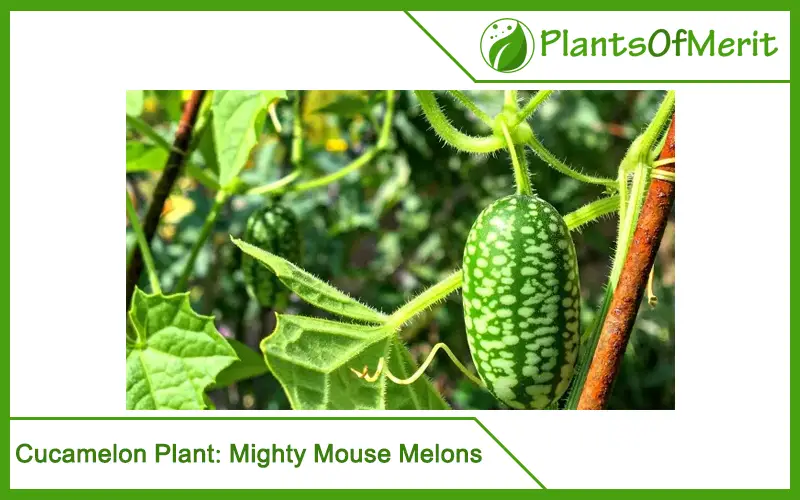What is the first thing that comes to your mind when you think about the summer months? Is it the scorching heat, the bright sunlight, or the wide range of summer fruits that will likely grace your life with their presence? If it is the latter, we have a few suggestions to drop into your basket.
Let us put you on in a little secret – Cucamelon Plants. Also known as might mouse melons, Cucamelons are sour summery melons that belong to the cucurbit family. They are typically native to the countries stretching across from Venezuela to Mexico and are quite popular there.
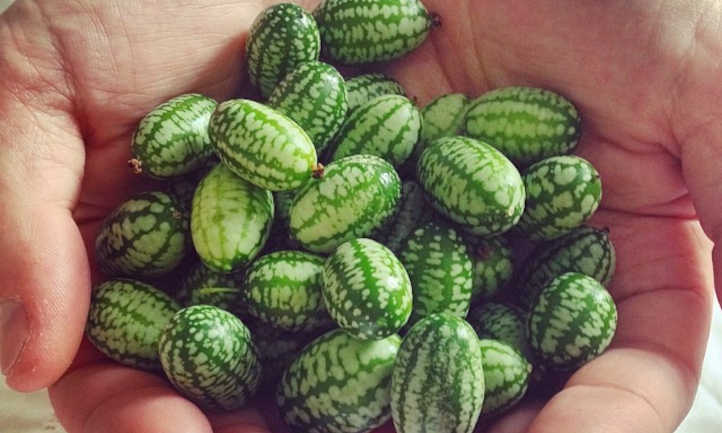
Since it has a slightly sour and pungent taste to the fruit, it isn’t surprising that they make a good addition to the list of summer fruits that you can eat throughout the season. However, would you be surprised if we said that growing cucamelon in your garden is quite easy? It grows quite quickly and leaves you with one of the tastiest fruits that you’d taste this summer.
In this post, we will walk you through every last detail that you possibly need to know about Cucamelon and why it is such a popular summer fruit that you should consider growing too.
Cucamelon Plant Growing Factors – Overview
Before we delve deeper into the different growing tips and the diseases and pests that you need to look out for, let us get an overview of what you can expect. Cucamelon is native to South American countries, so having an idea about the basic growth parameters is a key to witnessing it flourish.
Here’s a quick overview of everything you need to know:
| Growing factors | Description |
| Common names | Cucamelon, Mouse melon, Sour gherkin, etc. |
| Scientific name | Melothria scabra |
| Sunlight | Direct sunlight exposure |
| Water | 1 inch every week |
| Soil | Enriching, well-drained |
| Pests | None |
| Days to harvest | 60-75 days |
| Fertilizer | Fish emulsion (rare) |
Now that you have a clear overview of what’s to expect when growing cucamelon, let us delve into the in-depth rundown of growing this creeper.
More about the Cucamelon Plant
Besides the growing factors, having a basic understanding of the actual plant is pretty crucial too. Alternatively known as Mexican mini melons, these grow as vines, much like how a standard watermelon or a cucumber would grow.

It is native to South and Central America and has been used in food and medicinal properties as well. The plant was extensively used by the indigenous people and later made its way into North America following the period of colonization.
The vine of cucamelon generally grows up to 8-9 feet. But, the seeds take around 10 days after sowing to germinate. Also, the fruit in the plant takes around 60-75 days to mature and can be growing annually in the colder regions of the country.
If you have never eaten cucamelon before in your life, be assured that their taste is a lot similar to a standard cucumber but with a slight tartness to it. Also, the only part of the cucamelon plant that is edible is the fruit. You can’t eat any part of the stem or the leaves. You should eat the fruit when it is bright green. However, if it turns purple, be aware of the quantity of food that you eat, especially because they turn into laxatives then.
How to Correctly Plant Cucamelons?
If you consider planting cucamelons, timing is a key. You need to start the plantation around 4-6 weeks before the late frost date in spring.
You can grow them both indoors and outdoors, which is a pretty amazing and versatile feature of this plant. So, this means that if you don’t have enough space around your garden or you live in an apartment with no outdoor access, you can grow them inside your home.
Since they are easy to grow and propagate, you can grow them directly by throwing the seeds into the growing bed. Also, since they grow as vines, you can directly plant them into your gardening beds and grow them vertically to save a lot of space as well.
However, the only factor that you need to pay close attention to are the quality of the soil and the kind of sunlight the plant is getting. Direct sunlight is q key to optimal growth of the plant, so you can’t take that for granted at all.
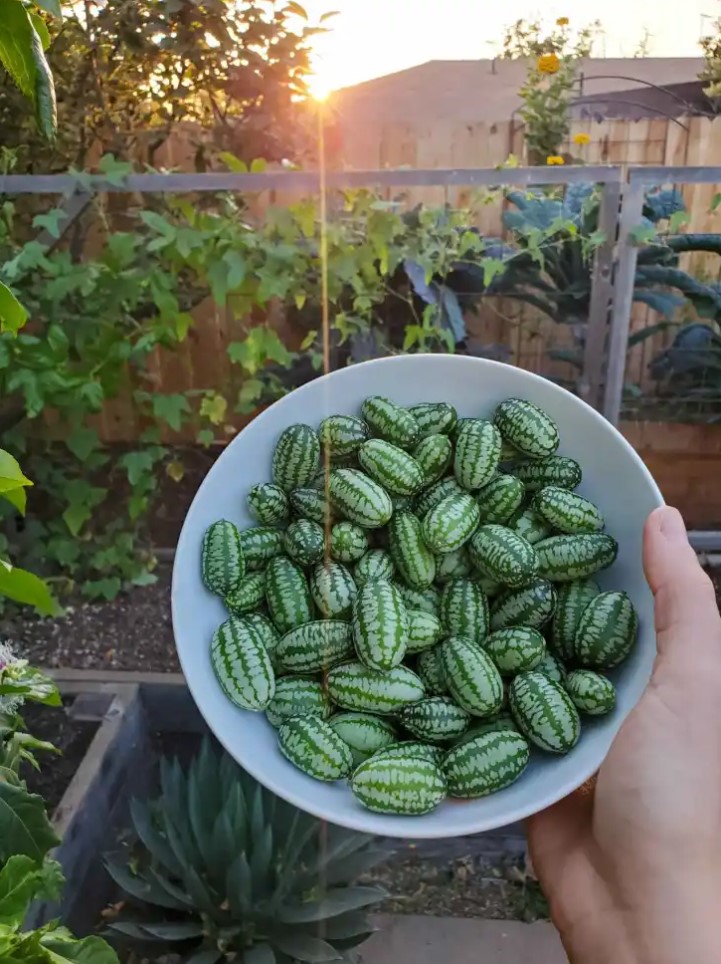
Growing Guide for Cucamelons
With the basic understanding of the when and where to plant your cucamelon plants, the next factor that you need to pay close attention to is the associated factors that go into growing the plant.
Cucamelons don’t require very close vigilance and tend to grow optimally on their own once you have sown and germinated the seeds. However, a little bit of extra negligence can end up completely damaging the growth rate, which is the absolute last thing you need.
Here’s what you need to be mindful of in this case:
- Sunlight parameters
As we mentioned time and time since the beginning, growing cucamelon plants requires exposure to full sun. But, ideally, afternoon shade in a minimal amount is considered safe.
Since they are native to Central and South America, it isn’t surprising that the plant thrives in sunny and warmer climates. The only thing that you have to be mindful of is the water supply. If the water supply isn’t optimal, it will end up affecting the plant’s growth and lead to damage.
You have to wait until the last frost has passed in the spring months following which you can go ahead and plant it. Also, the optimal temperature for their growth is between 65-75 degrees Fahrenheit, which is a pretty standard range, to begin with.
Cucamelon doesn’t survive in colder or freezing temperatures, so be aware of the timing of the planting. If you plant it during the colder months, we’d suggest you don’t expect any tangible results from its growth.
- Water parameters
Much like direct sunlight exposure, even water is quite quintessential to the growth of this plant. Cucamelon requires a standard of 1 inch of water per week, which is pretty easy to maintain and monitor.
Another watering trick or technique that you should be alert about is the mildew growth on the leaves. The easiest way to avoid that is by watering the plant at the root and tuber region instead of the leaves. If you leave the foliage wet, it enhances the risks of mildew by a lot.
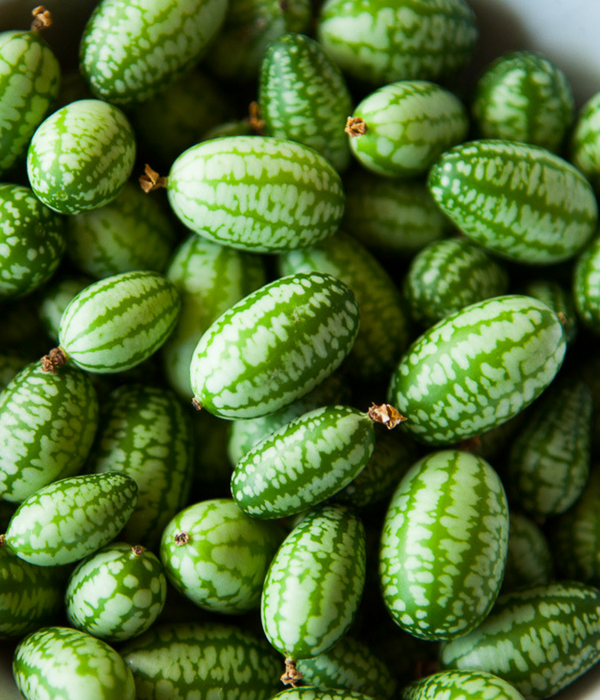
But, does lack water or drought completely kill the plant? This is another misconception that most people have. You’d be surprised to know that cucamelon plants are drought-resistant as well. This means that you will see a significant alteration to the size of the fruit but it doesn’t damage the plant completely.
- Soil parameters
Next up on the list of considering factors are the soil parameters. Cucamelons require well-drained and nutrient-deficient soil. Surprising, right?
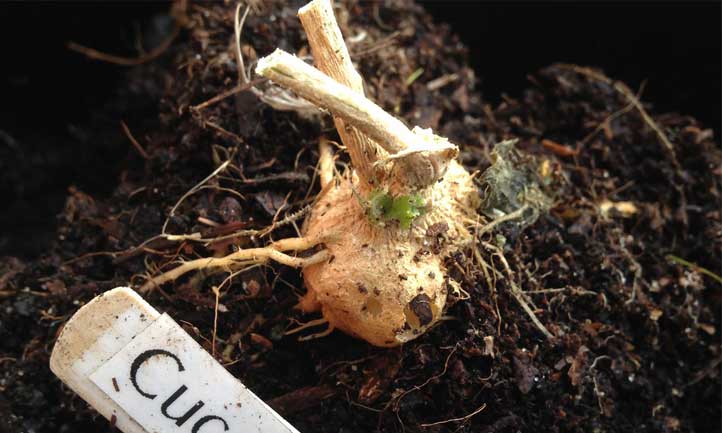
You can use standard potting soil for cucamelon plants, which is a relief because they are easily accessible for most people across the world. When potting the plant, you also need to pay close attention to the pH of the soil, which should be between 6-6.8.
Anything extremely high or low will affect the growth and can even halt the growth entirely, so be aware of the same.
- Fertilizer requirements
As we just said, cucamelons thrive in nutrient-deficient soil, which means that you can grow them without any excess fertilizer requirement.
If your potting soil has the standard nutritional levels, chances are that you won’t have to add anything in excess. Excess fertilizer or nutrients in the soil will damage the plant’s growth, which is possibly the last thing that you want to experience.
- Pruning techniques
Cucamelons, like a cucumber, grows on vines, so you might notice their growth getting out of control in some situations.
While you are pruning or trimming the stem of the plant, ensure that you look for dust and mildew growth as well. If you notice a white powdery residue on the plant, you’d need to clean that off the foliage to ensure that it doesn’t hinder the growth of the plant.
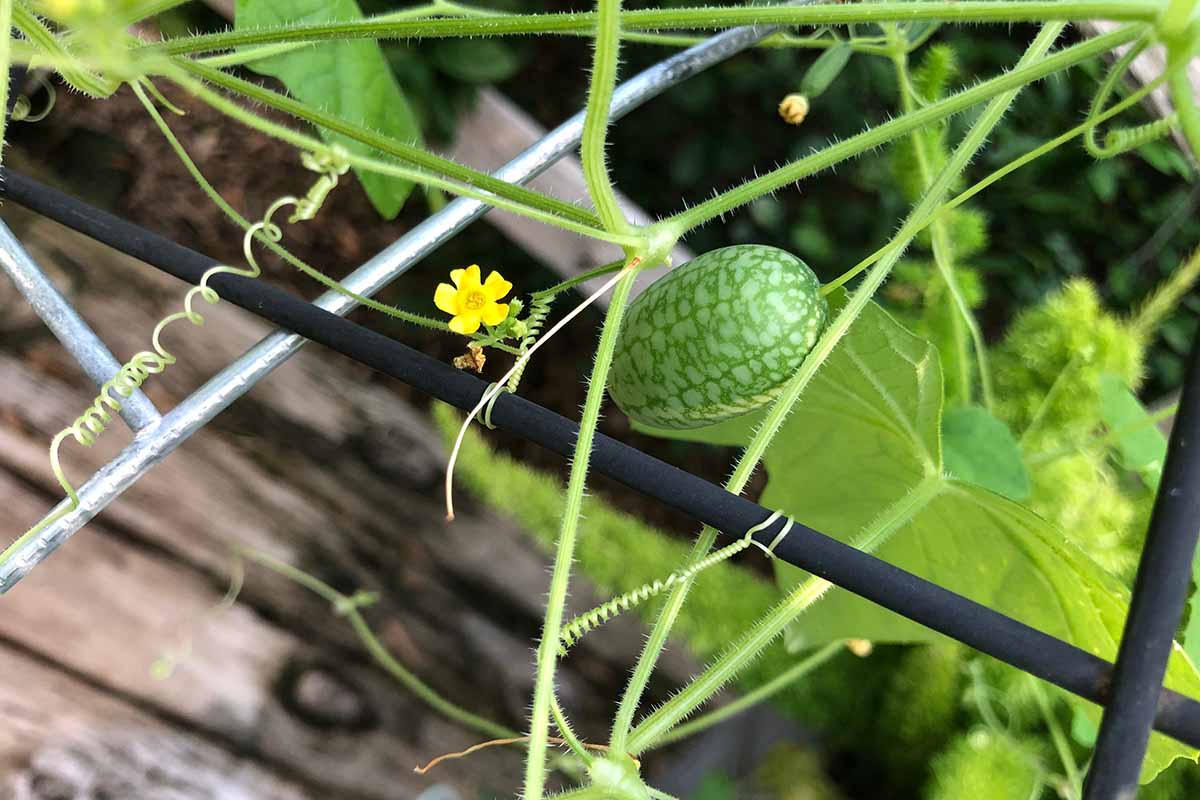
Especially during the growing season of cucamelons, you need to actively prune or trim the plant and snip the excess part from the tendril of the plant to allow further propagation of the plant.
- Propagation specifications
Cucamelon grows at an exponentially fast and seamless rate. So, if you are sitting here stuck and worried about how you’d source the seeds to grow the plant for the next season, you can always collect the seeds from your first harvest.
The seeds that you collect from the first harvest can be used for the next harvest. The best way to collect the seeds for your next harvest would be by cutting one of the fruits in half. You can then scoop out the seeds and transfer them to a clean jar. Cover the seeds and the jar with some water for up to 2 days. Ensure that you stir the water in the jar daily.
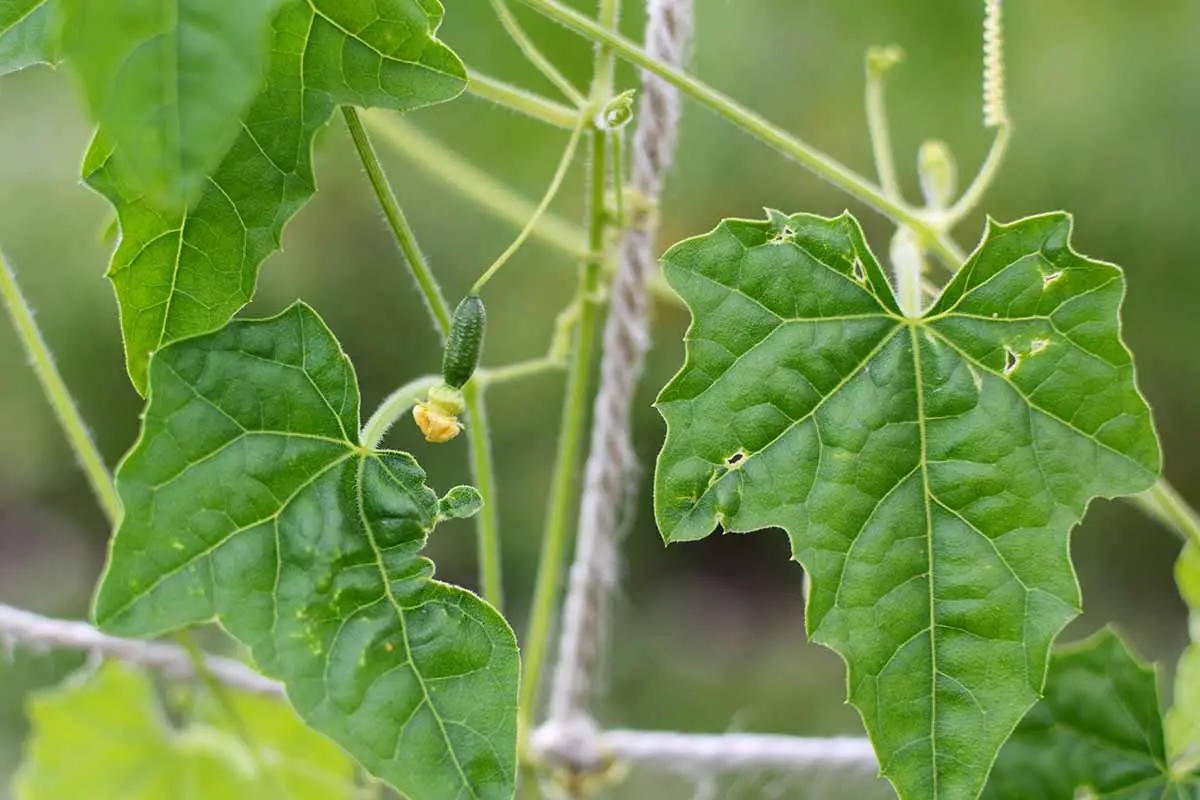
After two days, you need to take out the cucamelon seeds and transfer them to a clean and dry paper towel. These fermented seeds can be stored for planting in the next season. Saving the seeds from one harvest is the easiest way to propagate the plant for your next harvest.
How to Harvest Cucamelon Plants?
Once you start noticing your cucamelon growing and propagating in your garden, you must be excited about the final harvest. So, when is the optimal time to do so?
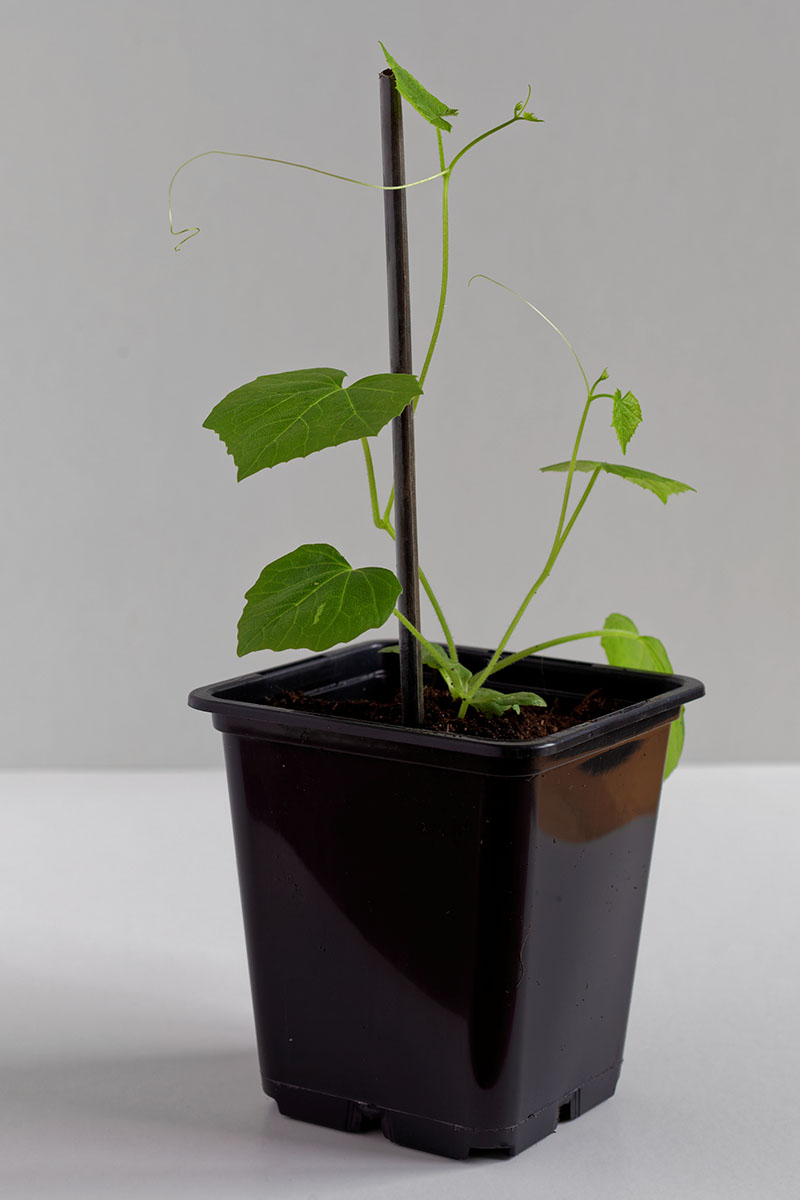
You need to wait until the fruit has turned into the size of a grape before you can go ahead and harvest the plant. However, some of the cucamelons might not be ripe enough even though they are large enough to a size of a grape. In such cases, you need to squeeze the fruit between your fingers and check if it is firm enough. If the fruit is firm, you need to wait some more.
How to Store Cucamelon Plant?
When it comes to storage, there are two aspects to the cucamelon plant. You can store the freshly picked fruits and eat them within a day or two.
If you aren’t interested in that, you can go ahead and cut the fruit in half and then follow the steps mentioned in the propagation section to ferment and save the seeds for your next growing process.
The seeds should be saved in an airtight container for future use to ensure long-term usage. Also, freezers and dehydrators work pretty well as well.
What are the Cucamelon Plant Diseases and Pests?
The best thing about growing cucamelon is that it doesn’t attract any kinds of pests. This ensures that the plant won’t have any issues with growth, especially in the long run.
However, does this mean that it completely wipes out the risks of pests? Technically, no. Root-knot nematodes are quite common and feed on the tuber part of the plant.
When it comes to diseases, one of the most common complications is the Pseudoperonospora cubensis, which is a type of fungal infection that affects the plant’s growth. The most common reason behind it is when the plant is too wet, especially around the roots and the leaves.
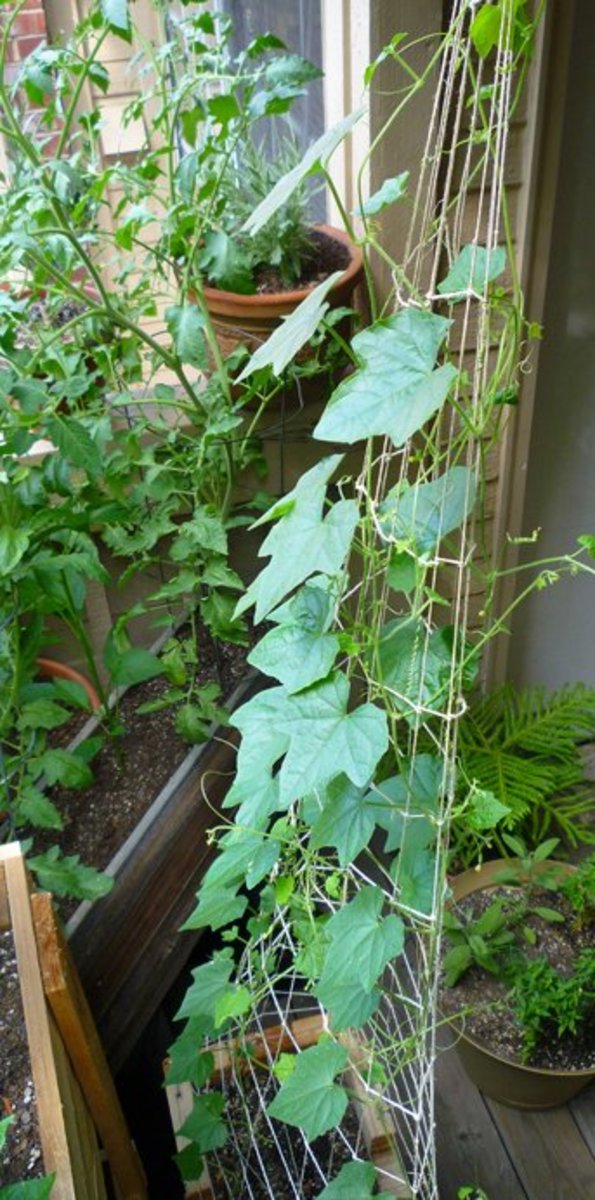
Another common issue is the powdery mildew growth on the plant. If left untreated, the mildew can get into the growth of the plant and completely damage it. The cucumber mosaic virus is another disease that affects the cucamelon plant, so look out for the green mottling signs in the leaves.
FAQs
1. Are mouse melons edible?
Cucamelon is not just edible but it can be eaten raw, used in stir-fries, or even pickled in brine if you want to preserve it for a longer period. When eating raw, it is better to pick and eat the younger and tenderer fruits. The older fruits have developed seeds inside them, which are ideal for pickling. Also, they need well-draining soil for optimal growth.
2. How long does it take for cucamelons to produce fruit?
Cucamelon takes around 65-75 days to completely fruit after a successful transplanting. Also, since they grow on vines, they do grow optimally without any hassle. Just ensure that you harvest them during the peak period, especially when the fruits are the size of a small grape and they are firm to the touch.
3. Are cucamelons worth growing?
Despite what you think, cucamelon is worth growing without any questions. If you go around the market to buy them, they are pretty expensive, and buying them would make you think that growing is a better alternative. So, if you have the space and the right growing parameters, we’d recommend that it’s better to grow them yourself.
4. Are cucamelons poisonous to dogs?
There is not enough scientific evidence to confirm whether or not cucamelons are poisonous to dogs or not. But, for the most part, they are considered safe. However, they do contain antioxidants, which can be great for dogs to munch on.
5. Do cucamelons grow back every year?
Cucamelons are perennials, meaning that if the weather conditions are optimal, they will grow every year from the same rootstock. However, growing from the same rootstock requires a lot of tending, especially because it requires mulching and insulating the area to ensure uninterrupted growth, especially during the growing season.
Conclusion
The Cucamelon plant is hands down one of the most popular summer fruit plants that you can grow around in your backyard or garden. If you were confused about its growing guide, we hope that this post gives you a comprehensive understanding of the growing tips. Remember that growing cucamelon is straightforward. Just ensure that you follow the right growing tips and parameters to ensure that the plant thrives in the best-growing conditions

